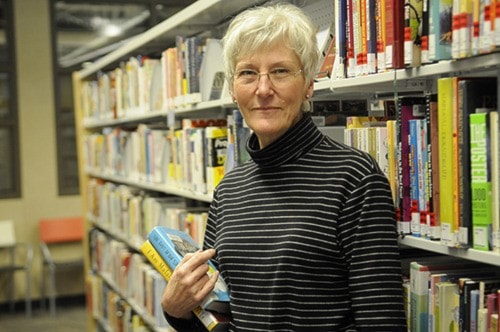You can buy a lot of books, magazines, newspapers, and DVDs for $3.5 million.
Last week, the Fraser Valley Regional Library (FVRL) approved its collections budget for the coming year, but the work never stops for Mary Kierans – who as manager of support services oversees the FVRL’s collection.
Every week, Kierans opens her email to find an alphabetized list of the books, DVDs and CDs the Fraser Valley Regional Library’s patrons think she should buy.
By the time she reaches the letter B on one such recent list, readers will have urged her to purchase: an anthropologist’s investigation into the lives of a Chinese city’s business elite; a DVD “documentary that everyone should see”; a Hindi romantic comedy; a B.C. man’s self-published book about his hunting adventures; and a British novel longlisted for the Booker Prize.
Beyond selecting which of the world’s endless supply of books, DVDs, CDs and other materials might be valuable to more than one person, the FVRL’s librarians must also predict which books local users will devour by the hundreds.
“We take a weird kind of pride in being very quick off the mark,” she says. “Some of it is obvious … but there are the ones that just jump out of nowhere.”
Kierans knows to buy 80 to 100 copies of the new James Patterson mystery. But a book like Station Eleven, by B.C. author Emily St. John Mandel, wasn’t on the library’s radar before readers started requesting it. Today, the FVRL owns 46 copies. Occasionally, a single event can spur a sudden upsurge in demand. Following the Academy Awards, hundreds placed holds for DVDs of Boyhood, even though the film only won for best supporting actress.
The library monitors buzz and reviews, and uses past publishing numbers to determine which books to buy. But because some authors and subjects do better than others locally, Kierans and company – another librarian is in charge solely of children and youth materials – also have to be aware of the characteristics of local users.
Library users take out a huge number of DVDs – a trend that has only increased since the demise of rental giant Blockbuster.
“We used to joke that everyone in the Fraser Valley eats kale, watches DVDS and are knitting socks.”
Canadian novelist Miriam Toews is a particular local favourite, and books by inspirational and Christian authors like Beverly Lewis also do well.
Kierans also deals directly with many self-published authors, buying some but not all of the books on offer. While quality varies, Kierans says local non-fiction is particularly strong.
Technology has changed libraries in myriad ways, not least of which is the twinned ability of readers to reserve a book with a click of the button and of libraries to react to such demand.
Librarians can now know when it needs more copies of certain books, although Kierans admits that “Sometimes things get out of control before we even notice it.”
Beyond individual titles, the library must also decide in which of the “zillion” more formats to invest its substantial budget. Sometimes the numbers show that trendy new technologies aren’t yet favoured by patrons. After a surge a couple years ago, e-books have not risen to usurp the printed word. The university is investing in the format, and fiction e-books are particularly popular, but Kierans says “it’s a bit of a waiting game,” to see just if and when e-book use will take off.
The library doesn’t want to abandon existing formats, but it must also accommodate the next generation of information consumers.
“Part of what we’re already doing is looking at the trends for the coming year. Are DVDs going down or up? Do people even take out music CDs anymore? Yes they do. Do we even buy CD books anymore?”
And then there are the materials that wear out their welcomes. The library – which has more than one million items – takes pride in the appearance of its collection, and unused, unloved and un-pretty books get weeded out, with many ending up in the FVRL’s regular book sales. Unused databases meanwhile, get quietly dropped. And the internet has taken a bite out of the reference sections – when a world’s worth of knowledge is at one’s fingertips, there’s less need to make the journey to the library.
Time has also changed the jobs of those who work between the shelves.
When Kierans began her career in libraries more than two decades ago, she says librarians saw themselves as gatekeepers of a world of knowledge, with a duty to deliver knowledge to passive-directionless readers. Today, patrons already know what they want, and Kierans says she and her colleagues have responded by focusing more on anticipating users’ demands and needs.
“I think you have to be a zealot and sort of weirdly obsessed by all this.”
--------
2014 most popular books at FVRL
Adult fiction:
Sycamore Road- John Grisham
Invention of Wings- Sue Monk Kidd
Invisible- James Patterson
Adult Non-fiction
I am Malala- Malala Yousafzai
House in the Sky- Amanda Lindhout
Guinness world Records 2014
Teen Books
Fault in our Stars- John Green 
Allegiant- Veronica Roth
Insurgent- Veronica Roth
Children’s Books
Diary of a Wimpy Kid: the Third Wheel- Jeff Kinney
Diary of a Wimpy Kid: Hard Luck-Jeff Kinney
Diary of a Wimpy Kid: the Ugly Truth- Jeff Kinney
